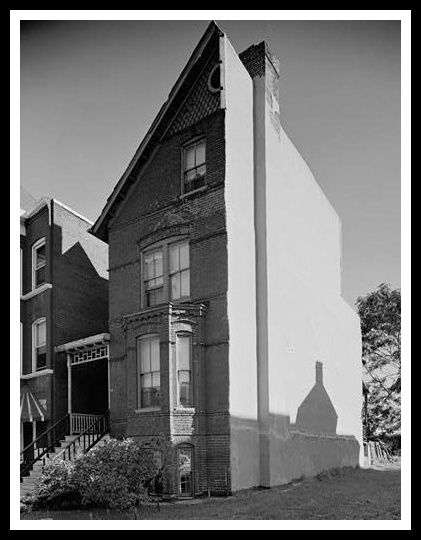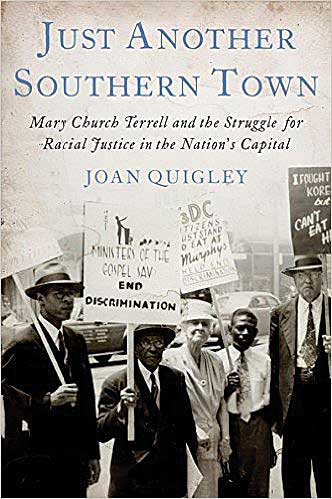
Mary circa 1925ish (the photo isn’t dated) Library of Congress
When we last left Mary Church Terrell, it was 1898, she was 34 years old, standing on a stage and receiving thunderous applause after having given a speech entitled, The Progress of Colored Women to an audience at the National American Women Sufferage Association. (You can read her speech here, at blackpast.org.)
She was also seven months pregnant! Mary had three miscarriages in the first five years of marriage, but this time she gave birth to a healthy daughter! Mary and Robert named her Phyllis (after Phillis Wheatley, Episode 119) later, the daughter of Mary’s brother would come to live with them, too, rounding out their family.

Judge Robert Terrell circa 1910 wikicommons
While being a mom (and often with Phyllis by her side) Mary continued writing and speaking around the world about the treatment of people of color, many formerly enslaved, and especially those who lived in the southern United States where laws were oppressive and racial tensions were high. She spoke about the rights of women to vote, the cruelty of lynching, and against Jim Crow laws; she spoke about the entire experience of African-Americans in the United States and how their lives could improve when there was racial equality. But she wasn’t just words, she actively helped establish educational and training programs to help black communities.

Inez Milholland leading the 1913 Suffragists Parade Washington, D.C. Library of Congress.

The same parade on Pennsylvania Avenue, this is the crowd the parade went past and through! Library of Congress
As she got older, Mary’s activist methods altered. She had believed that the most effective way to create change was to change people–educate them, give them skills…and work within the established system. But around the time that she became a charter member of the NAACP in 1909, she shifted tactics and began to work to change the system itself. She protested outside the White House for women’s suffrage and, when the 19th Amendment was passed, she worked to stop voter suppression laws that were keeping impoverished people and people of color, from the polls.
When Robert died in 1925, Mary was a 62-year-old widow who still had big projects in her. In 1950 she was refused service at Thompson’s Restaurant in Washington, DC. It was company policy and besides, a lot of restaurants were segregated, it was the norm. What wasn’t the norm was what Mary and her friends did next: they sued Thompson’s. While that case was working its way through the legal system, she joined boycotts of other restaurants that held the same segregation policies until they changed their MO and became integrated.

Mary’s house on T Street in Washington. It’s in dire need of refurbishing, but it’s also on the National Register of Historic Places and owned by Howard University who have plans to do just that.
In 1953, Mary’s case, District of Columbia v. John R Thompson legally, with the backing of the Supreme Court, desegregated restaurants in Washington and led to the same across the country. A year later, another Supreme Court case, Brown v. Board of Education legally desegregated schools. There was, and still is, a lot of work to be done on the causes of racial and gender equality that Mary fought for, but Mary’s activist days ended two months after the Brown v. Board of Education verdict when she died on July 24, 1954, just shy of her 91st birthday.
Time Travel With The History Chicks
BOOKS!
Obviously, start with her autobiography…if you can find it!


The biography, by Joan Quigley

A compilation that we both liked by Dorothy Sterling
Middle Grade:

By Cookie Lommel
Little Kid:

Kirsten Gillibrand and Maira Kalman
Flashcards:

We get no kickbacks (from anything we recommend) but they are for sale here, and we thought this was also a cool toy website Eboo
WEB!
You can find a number of her speeches online, Iowa State has a nice collection of them on this webpage, scroll down just a little IOWA STATE CATT CENTER MARY CHURCH TERRELL SPEECHES. Here is her rebuttal to the idea of putting up a “Mammy” statue in her papers from the Library of Congress and here is an article about the whole (thankfully) failed project from the New York Times.
Mary’s papers are archived at Oberlin College and digitally at the Library of Congress.
If you’re in the mood for rabbit holes, here’s Governor Andrew Johnson freeing Tennessee slaves, Mary’s involvement in the Brownsville incident,and The American Negro in the World War by Emmit J. Scott (we know it as “WWI”)
We’ve mentioned several times that the Republican and Democrat parties have evolved since Lincoln’s (and Mary’s) day. We thought that this article explains it pretty clearly: VOX, and here’s a mesmerizing map of the changing boundaries of the Union and Confederate armies during the Civil War (not Smithsonian, Susan was incorrect, National Geographic.)
An article in Smithsonian magazine details of Mary’s work to overturn restaurant segregation in Washington, Smithsonian, and one from the Washington Post about Mary and her Delta Sigma Theta sisters marching in the suffrage parade.
Mary’s beloved Oberlin College renamed their library after her, and they have (among other papers) a quick timeline (which is more of a activityline, but is that even a thing?) of Mary’s life: Oberlin College Library Project.
If you find yourself in Washington, DC, this might be a handy reference: African American Heritage Trail in Washington
FILM!
A documentary about Mary and her historic house. **This video has since been taken down, if we find it anyplace else online, we’ll update the shownotes.**
Don’t forget to check out the two Pinterest boards for this episode, the one about Mary specifically, and the one about suffragists in general (click the image to link to the boards.)
Our friends, the Satellite Sisters, say it best (and have the merch to prove it!) Stay noisy!

Click the image to shop Satellite Sisters merch (again, no kickbacks for us, but we admire them a great deal.)
We would like to take a moment to thank our sponsors! Did you know that when you use these links and codes, that makes you a sponsor, too? Thank you!!
ThirdLove knows that there is a perfect fitting bra for everyone, find yours and get 15% off your first order at ThirdLove.com/CHICKS
Betabrand knows that stylish and comfortable meet when you wear their Dress Pant Yoga Pants! Get 20% off your first order at Betabrand.com/CHICKS
Music provided with permission from iLicense:
Break song: Persistence by Made of Wood
End song: In Your Face by Brad Sucks




